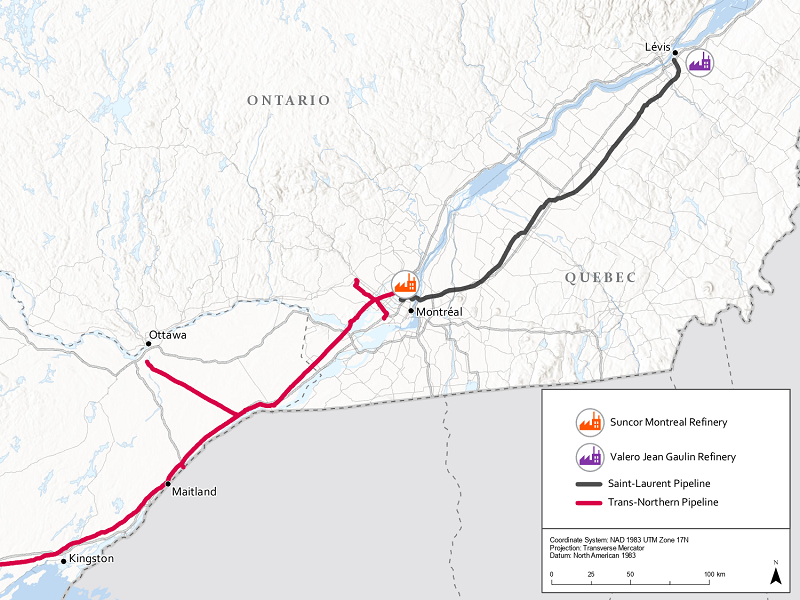Market Snapshot: Quebec’s gasoline market is one of the largest in Canada
Connect/Contact Us
Please send comments, questions, or suggestions for Market Snapshot topics to snapshots@cer-rec.gc.ca
Release date: 2019-08-07
Quebec consumed 165 thousand barrels per day (Mb/d) of gasoline in 2018, approximately 21% of Canada’s total demand.Footnote 1 Quebec’s gasoline mostly comes from within the province. Some is also imported from the U.S. and global markets. Quebec also plays an important role in supplying Ontario with gasoline.
Quebec’s supply chain for gasoline starts with crude oil imported from western Canada, the U.S., and abroad. Quebec’s refineries and storage terminals receive crude oil from western Canada and the U.S. via the Enbridge Line 9 pipeline. Crude oil is also imported from other U.S. states and abroad by marine tankers. Crude oil can also be shipped to the province by rail.
Quebec has the second largest refining capacity in Canada after Alberta. Quebec has two refineries, the Jean Gaulin refinery (235 Mb/d, second largest in Canada) in Lévis and the Montreal refinery (137 Mb/d). Together, these refineries produced 143 Mb/d of gasoline in 2018, 20% of all gasoline produced in Canada.Footnote 2
Figure 1: Crude oil supply to Quebec, 2018
Source and Description
Source: Statistics Canada Table 25-10-0041-01, Canadian International Merchandise Trade Database, NEB estimates
Description: This pie chart shows the sources of crude oil received by Quebec refineries in 2018. The U.S. supplied 52% of the province’s crude oil, or 168 Mb/d. Western Canada supplied 43%, or 138 Mb/d. Other countries, including Algeria, Azerbaijan, and the Ivory Coast, supplied 5%, or 15 Mb/d.
Gasoline from the refineries is shipped to storage terminalsFootnote 3 or to end users. From the Jean Gaulin refinery, gasoline can be shipped to markets by rail, ship, or the Saint-Laurent Pipeline. Gasoline produced at the Montreal refinery can be shipped to Ontario by the Trans-Northern Pipeline, ship, rail, and truck.
Figure 2: Refined product infrastructure in Quebec

Source and Description
Source: NEB
Description: This map shows the refined product transportation infrastructure in southern Quebec. It shows the Jean Gaulin refinery in Levis, near Quebec City, and the Montreal refinery in Montreal. It also shows two refined product pipelines, the Saint-Laurent Pipeline that runs between the two refineries, and the Trans-Northern pipeline which goes from the Montreal refinery into Ontario.
Gasoline prices in Quebec generally track the Canadian average. Quebec is well supplied with gasoline and is very well connected to other large markets. Drivers in Quebec generally pay more than those in neighboring Ontario, however. This is mainly because of fuel taxes, which are 14.7 cents per litre in Ontario and 19.2 cents per litre in Quebec.Footnote 4
Figure 3: Daily regular gasoline prices in Canada (retail)
Source and Description
Source: Kent Group Ltd.
Description: This map shows the refined product transportation infrastructure in southern Quebec. It shows the Jean Gaulin refinery in Levis, near Quebec City, and the Montreal refinery in Montreal. It also shows two refined product pipelines, the Saint-Laurent Pipeline that runs between the two refineries, and the Trans-Northern pipeline which goes from the Montreal refinery into Ontario.
For more information on the gasoline supply to different parts of Canada, please see our report, Where does Canada’s gasoline come from?
- Date modified:
